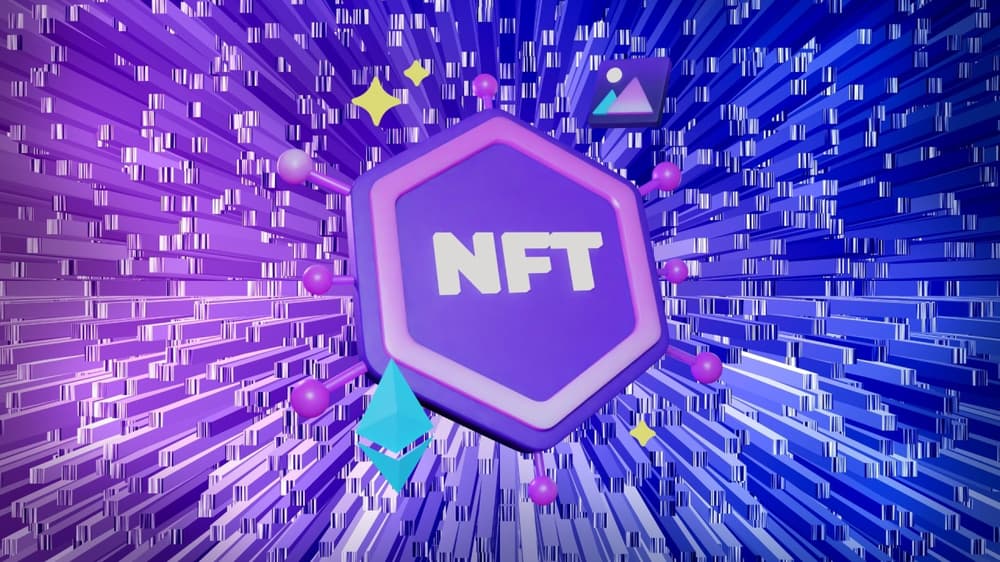NFTs are evolving far beyond digital art into powerful financial tools. Finance professionals are now using NFTs to create smart contracts, secure loans with digital assets as collateral, and tokenize real-world assets like real estate and shares.
NFTs Beyond Art: How Finance Pros Are Using Blockchain for Smart Contracts and Loans
Written by Sumit Kaushik

When you say "NFT" to the average person, they instantly see colorful digital artwork, meme-able spec fiction trading cards, and multimillion-dollar JPEG sales. But behind the flashy headlines, a hushed-over financial revolution is unfolding: NFTs are moving out of art — into serious finance.
From collateral loans and smart contracts, finance professionals are using blockchain technology in use cases that have the power to change forever how we manage assets, debt, and contracts. Let's take a look at the next chapter of NFTs — and why Wall Street is paying attention.
What Are NFTs Really?
NFT stands for Non-Fungible Token — a unique digital asset stored on a blockchain. Unlike cryptocurrencies like Bitcoin (where every one is identical), every NFT is unique and can't be exchanged one-for-one with another.
Initially made famous in the art world, NFTs showed one simple yet powerful idea: you could create, own, and trade digital scarcity.
What if, though, this technology wasn't just applied to the sale of paintings — but to represent ownership of assets in real life, activate smart contracts, or even secure loans?
NFTs and Smart Contracts: A Perfect Match
The concept of a smart contract lies at the core of blockchain — autonomous contracts written directly into the blockchain, with no middleman needed.
And that's where NFTs come in:
➡️ Any NFT can be associated with a smart contract that automatically enforces terms — no lawyers, no paperwork.
➡️ NFTs can be used to represent legal ownership and transfer of anything from property to investment units, with proof permanently recorded on the blockchain.
➡️ Transfer of an NFT instantly triggers contractual changes, like handing over ownership or releasing funds.
Example:
Imagine buying a car where ownership is tied to an NFT. Payment and title transfer happen instantly via smart contract — no DMV lines, no paperwork, no delays.
NFTs as Collateral for Loans
Another rapidly spreading trend? NFT-backed loans.
Here's how it happens:
- You have a valuable NFT (like a limited collectible or an NFT that represents a block of land).
- Instead of selling it, you offer it up as collateral on a loan.
If you repay the loan, you keep your NFT. - If you're a defaulter, the lender keeps the NFT.
This is already happening through venues such as
- NFTfi: A peer-to-peer platform for NFT collateralized lending.
- Arcade: Institutional lender platform that allows issuance of loans against portfolios of NFTs.
- Aavegotchi and Unlockd: Ecosystem builders for larger NFT finance platforms.
Real-World Impact:
Artists, entrepreneurs, and investors can now access liquidity from digital assets without selling them — a basic financial innovation.
Beyond Collectibles: Real-World Asset Tokenization
One of the biggest bets on NFTs in the future isn't on collectibles at all — it's tokenizing real-world assets like:
- Real Estate Titles
- Luxury Items
- Private Equity Shares
- Event Tickets
- Intellectual Property Rights
Buying a share of ownership of a Manhattan tower in NFT shares. Or NFTs to buy rights to a music catalog — with smart contracts automatically distributing royalties. It's referred to as asset tokenization, and it might democratize investing while making markets previously closed to the ultrawealthy accessible.
Why Finance Experts Are Getting In
Finance professionals are intrigued by NFT-based solutions because of the following:
✅ Greater transparency (everything is publicly verifiable on the blockchain)
✅ Greater speeds for transactions (no third-party verification needed)
✅ Lower costs (fewer middlemen = lower costs)
✅ New flows of liquidity (by unlocking the value of traditionally illiquid assets)
As speed, security, and flexibility are more critical than ever, NFTs offer a set of tools for remaking the future of finance.
Challenges and Risks Ahead
Surely, the road is not a smooth one:
Regulatory Uncertainty: Governments are racing to catch up with blockchain innovation.- Volatility: NFT prices can fluctuate wildly, which makes collateralization of loans risky.
- Fraud and Scams: As with any new technology, unscrupulous actors can exploit the hype.
To make NFTs really reach the finance mainstream, there must be sound regulation in place, enhanced security features, and wider education for lenders and investors.
Final Thoughts
NFTs are no longer just about avatars or art — they're laying the groundwork for a decentralized system of finance that would be rivalled by banks, brokers, and even credit bureaus. As blockchain technology continues to evolve, expect NFTs to power everything from mortgages to business loans to contracts — all automated, authenticated, and available at the touch of a button.
The future of finance could be just one token away.